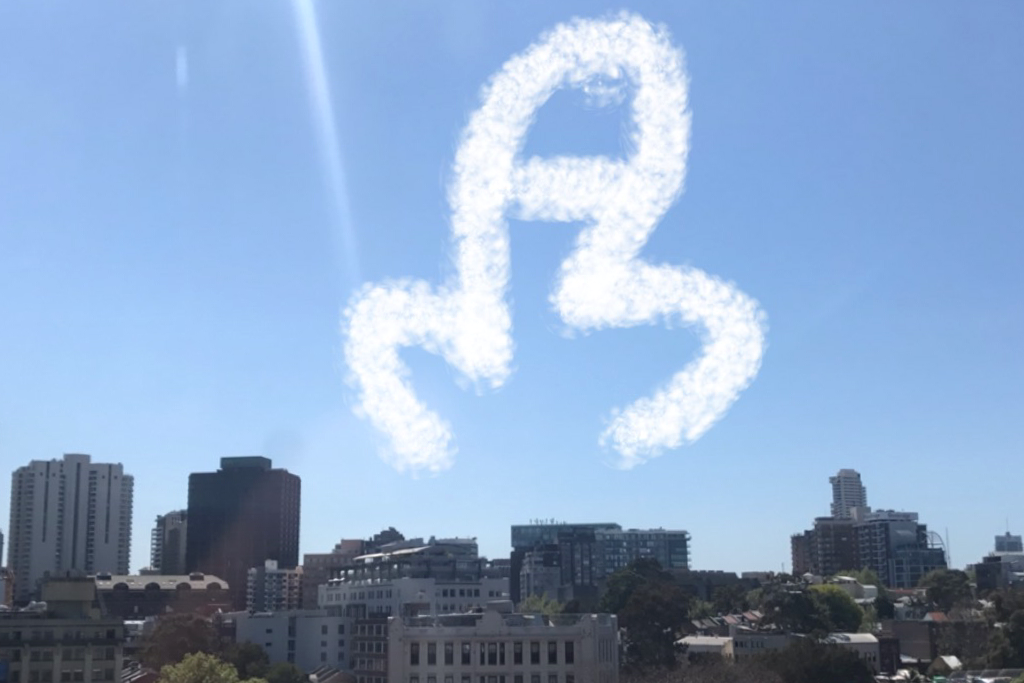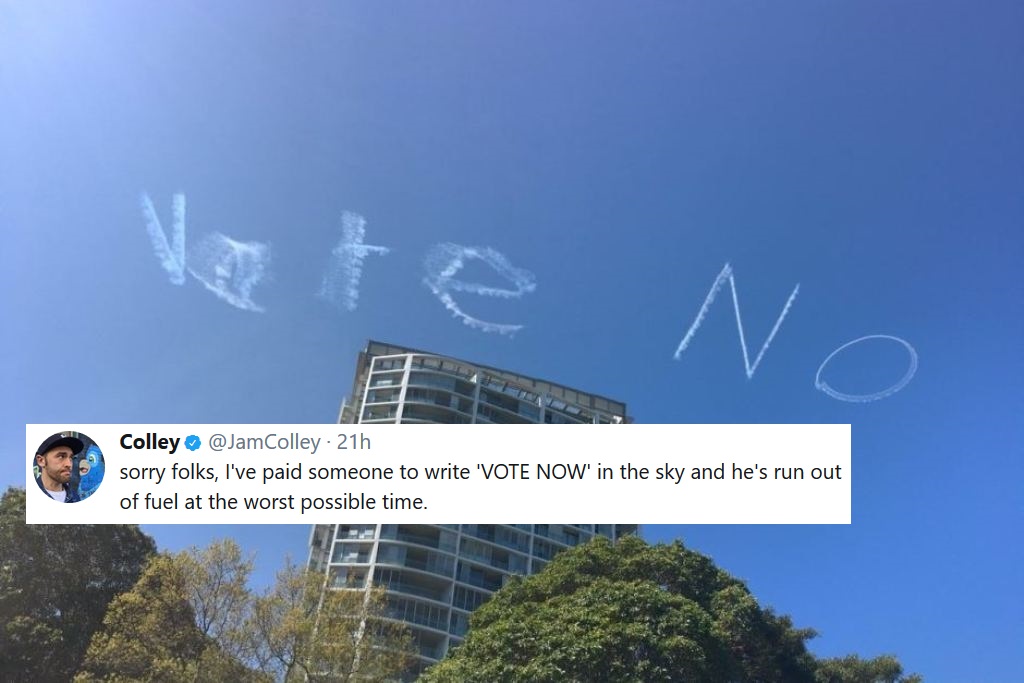Who Rules The Sky: What Are You Actually Allowed To Skywrite In Australia?
A Junkee investigation.

If you live in Sydney and like LGBTQI+ people, there’s a fair chance you spent part of your weekend shaking your fist in rage at the sky.
Even if you spent the entire weekend vigorously avoiding the outdoors, it was hard to miss on social media — on Sunday, opponents of marriage equality crowdfunded a skywriter to scrawl “Vote No” across an otherwise perfect blue sky. The act spurred a lot of tweets along the lines of “get that bigotry out of our sky”, which raises an important question:
Who actually rules the sky?
Or if you’d like that in Serious Journalistic Terms: are there regulations on what people can skywrite in Australia? How do regulations on authorising political materials work when those political materials are giant letters expelled from a plane into the literal sky? What’s stopping someone from drawing a dick that can be seen by an entire city?
Gonna cost a fortune to skywrite the authorisation
— Rob Stott (@Rob_Stott) September 17, 2017
It turns out this is nowhere near as clear and straightforward as you’d think.
Does Political Skywriting Require An Authorisation?
Most political advertising in Australia is required to include an authorisation — that hurried voiceover at the end of TV ads, or the tiny print at the bottom of a flyer that tells you who is behind the content. While the postal survey on marriage wasn’t initially subject to these rules given that it’s not actually a binding vote or anything, Parliament passed some legislation last week to help keep everyone in line.
But this legislation doesn’t cover everything. It turns out that the authorisation requirements don’t apply to “an item whose size or nature makes it impracticable to notify particulars in accordance with this section”.
As a representative of the AEC confirmed to us this morning, “it is only material that is capable of containing authorisation details that is regulated by the Act”. Skywriting is, apparently, not one of these materials.
But What If I Just Want To Insult My Enemies Or Draw Dicks In The Sky?
But surely there are some limits on what you can write in the sky… right? Given that it’s an offence to use offensive language near a public place or school, it seems like a reasonable assumption that it might also be an offence to paint that same offensive language on the dome of the heavens.
And yet, almost everyone we spoke to in an attempt to clarify this point had no idea. Glenn Smith, an aerial advertiser who used to provide skywriting services, told Junkee it’s “freedom of the skies up there — we can do what we like”. As far as he knew, the only barrier to skywriting profanity was that it would be “silly to put something up there that was obscene”.
A representative of Branding By Air, another aerial advertiser, said that they simply had “just never done it”, and weren’t sure about whether regulations existed. Skywriting Australia, the company that wrote yesterday’s infamous “Vote No”, did not respond to requests for comment, possibly because they’ve been busy receiving a deluge of feedback on their actions.
NSW Police, meanwhile, said the whole thing was just “a very broad question because it hasn’t happened — profanities in the sky, that is”.
They said that while there are a number of charges that could potentially cover the situation, it’s hard to know what would stick if the situation actually came to pass. “We’d need it to actually happen,” the police said, “and then someone would have to complain and find it offensive. Then we’d need to investigate it. There could be nothing, there could be something.”
We also contacted a handful of academics, who mostly laughed at us before promising to try to find out. If they ever get back to us, we’ll let you know.
The only clear answer we’ve received so far is from the Australian Advertising Standards Bureau, who said that if the skywriting in question was a non-political advertisement, then it definitely needs to adhere to their guidelines, which include an extensive list of unacceptable terms. That still doesn’t answer the question of personal use, though.
And sure, maybe this will never come to pass because the Venn diagram of “people who write on the back of bathroom stall doors” and “people with few thousand bucks to blow on skywriting” is just two circles that do not overlap. But in case you’re thinking about engaging in what the New York Times in 1923 decried as “celestial vandalism”, it’s good to be informed, and it turns out that’s a pretty tough ask.
If anyone does know the answer to this question, we’d love to hear from you! You can get in touch here with any tips.
